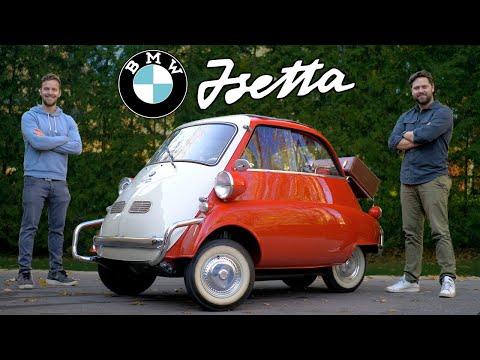Buying a BMW Isetta was not on my radar until one fateful day when a chance encounter at a vintage car show turned my world upside down. I was perusing rows of gleaming classic cars, each one more polished and pristine than the last, when I stumbled upon a tiny, peculiar vehicle that immediately caught my eye. Its rounded shape and single front door were unlike anything I had ever seen before. That was the BMW Isetta, and from that moment, I was captivated.
The Isetta, often referred to as “the bubble car,” is one of those oddities that you can’t help but love once you set your eyes on it. It was originally designed in the 1950s as a response to the post-war economic conditions and fuel shortages. BMW, which was primarily known for its motorcycles at the time, decided to venture into the microcar market. The result was this charming little vehicle that looked like it had been plucked straight out of a comic strip. It was small, quirky, and, most importantly, incredibly unique.
My journey with the BMW Isetta began when I decided to buy one. I had done my research and knew that owning an Isetta would be a mix of joy and challenge. I scoured classifieds, vintage car auctions, and even reached out to Isetta enthusiasts’ forums. The search wasn’t easy; Isettas are rare and finding one in good condition requires patience and a bit of luck.
After months of searching, I finally found an Isetta that seemed to be in good shape. It was a 1958 model with a bright red exterior that was slightly faded but still vibrant. The interior was original, with its vintage steering wheel and quirky controls that seemed to be designed for a different era. The seller, an older gentleman who had owned the car for decades, was kind enough to show me its maintenance history and share stories about his experiences with the Isetta.
Driving the Isetta was an experience unlike any other. The first time I got behind the wheel, I was both excited and a bit apprehensive. The Isetta’s single front door swings open like a refrigerator door, which felt odd but endearing. Once inside, I was struck by how tiny the cabin was. There was barely enough room for me to stretch out my legs, but that was part of the charm.
The engine, a modest 298cc single-cylinder, might have seemed underwhelming in the face of modern cars, but it had a unique character. Starting the Isetta required a bit of a ritual—pulling out a lever to engage the choke, turning the key, and then carefully balancing the accelerator. The engine’s hum was surprisingly pleasant, a gentle reminder of a simpler time.
As I drove around town in my Isetta, I quickly realized that it drew more attention than any other car I had ever owned. People would stop and stare, often with a look of pure curiosity and delight. Children waved enthusiastically, and adults often stopped to chat about the car’s history and quirks. The Isetta had a way of bringing smiles to faces, and that was something I cherished.
Handling the Isetta was an adventure in itself. Its tiny size meant that parking was a breeze, and maneuvering through tight spaces was almost too easy. However, the small engine also meant that acceleration was leisurely, and it took a bit of time to get up to speed. On the highway, the Isetta felt a bit out of its element, struggling to keep pace with faster traffic. But that was okay; I learned to appreciate the Isetta’s slower, more deliberate pace.
One of the most memorable trips I took in the Isetta was a weekend road trip through the countryside. Despite its small size, the Isetta was surprisingly comfortable, with a smooth ride that belied its modest dimensions. The scenery was beautiful, and driving the Isetta through rolling hills and quaint villages felt like stepping into a different era. The car seemed to fit perfectly with the nostalgic charm of the countryside.
Maintaining the Isetta was both a joy and a challenge. Finding parts was not always easy, and I had to rely on a network of vintage car enthusiasts and specialty suppliers. But working on the Isetta was also incredibly rewarding. The simplicity of its design meant that I could handle most of the maintenance myself, and each repair or restoration task gave me a deeper appreciation for the car’s engineering.
In the end, owning a BMW Isetta was more than just having a unique car in my collection. It was about embracing a piece of automotive history and experiencing a different way of driving. The Isetta, with its quirky design and charming personality, became a symbol of a bygone era and a reminder of the joys of simpler times. It was a car that not only turned heads but also brought a sense of joy and wonder wherever it went.
The BMW Isetta may be one of the weirdest BMWs you can buy, but it’s also one of the most delightful. Its unconventional design and charming character make it a standout in any collection, and owning one has been a truly unforgettable experience. If you ever get the chance to drive an Isetta, I wholeheartedly recommend it. The joy of experiencing this peculiar little car is something that stays with you long after the engine has been turned off.
